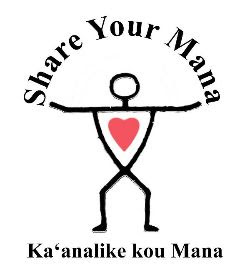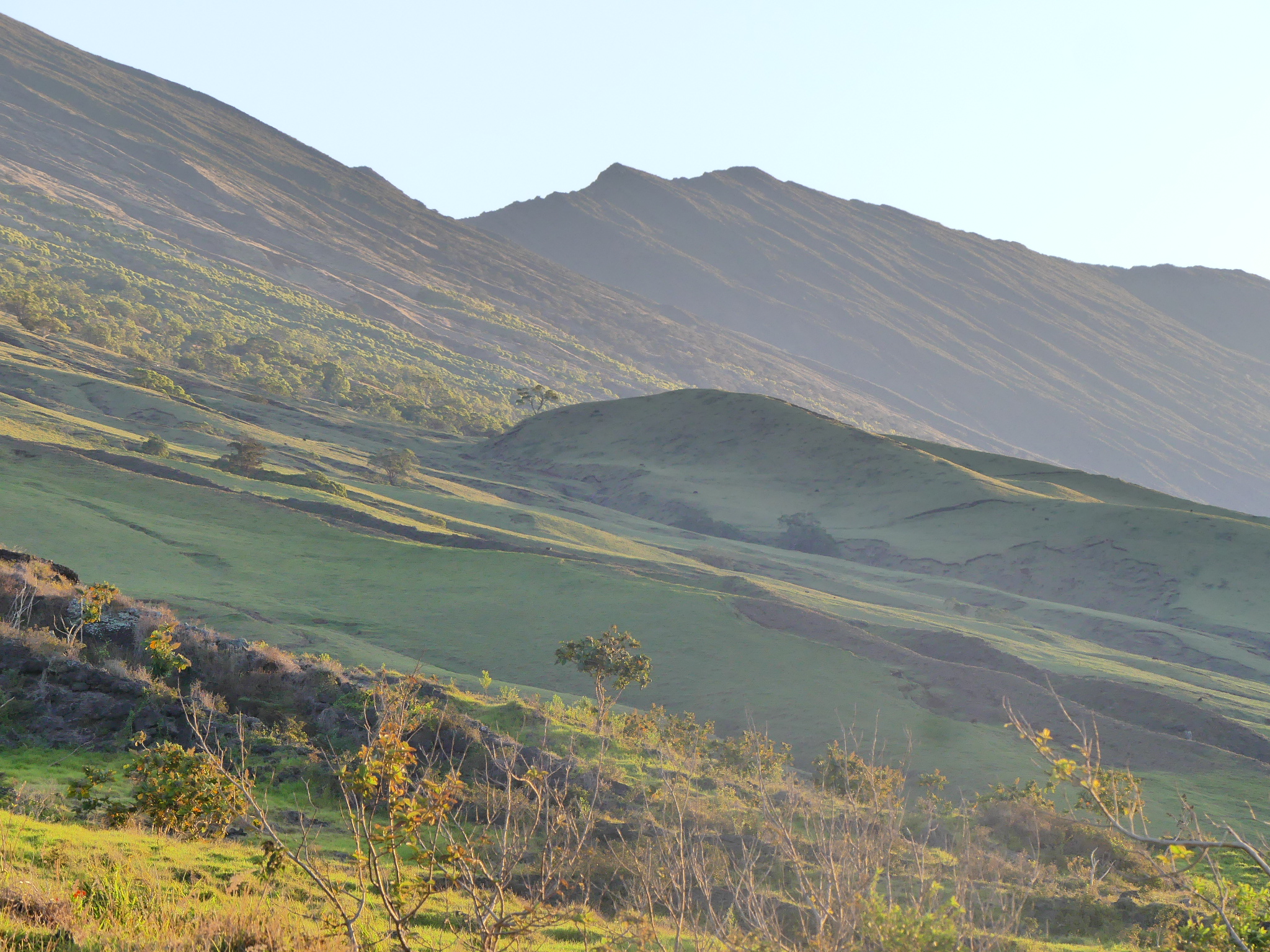PARENT WARNING: Disturbing pictures of animals included later in this article.
It started a year ago. Department of Hawaiian Homelands granted a commercial operator Right of Entry and thus, exclusive hunting rights in the southern remote Maui area of Kahikinui. This contradicts policy on commercial activities of this sort by the Department of Hawaiian Homelands (DHHL). DHHL sent emails to their very large email contact list of leaseholders reading in capital red letters, NO HUNTING PERMITTED ON HAWAIIAN HOME LANDS.
It’s important to understand that each island, each homestead has very different terrain and needs. There are superb examples of ways in which rural homesteads have agreed and regulated their ahupua‘a (district from mountain to the ocean). At Kahikinui, while community cooperation is in need of extreme strengthening, equal importance is on the DHHL administration to take another look at serious decisions that were made at the 22,861 acre homelands. In the new year of 2019, corrective change can be made with reconsideration of whom they provide area Right Of Entry.

The axis deer appears to be the inception point of the situation culprit at Kahikinui Hawaiian Homesteads. When numbers of Maui’s axis deer is said to have exceeded 50k at one point, axis deer removal was the premise in which this commercial outfit KIA, LLC began. For the sake of understanding, this population of axis deer is an alarming number and Maui County had a multi prong approach to examining what could best be done to keep people safe, farms free of loss and watersheds protected. One approach was a grant to conduct a Venison to Market Feasibility Study co-sponsored by Maui County with the University of Hawai‘i Maui College.

During the Venison to Market Feasibility Study research Jake Muise of KIA LLC was interviewed while working on Moloka‘i regarding his Large Animal Mortality Composting (LAMC) practices.
It was made a clear understanding to Muise that Maui was much different with the island’s inability to deal with the needs of LAMC. Maui has no rendering facility and the landfill is not legally equipped to do LAMC with staffing and proper Environmental Protection Agency (EPA) storm run-off compliance.
The lead stakeholder in this recent Kahikinui enterprise, Jake Muise, had done what he calls ungulate removal on Moloka‘i, Lana‘i, Hawai‘i island and Kaupo Ranch, Maui. No reports of support for his work was available from these ventures during the research of 2018. No comment was available from any Lana‘i affiliates and no one spoke on his behalf. It has been repeatedly shared that Muise was removed from each of these experimental enterprises leaving opala (trash) in his wake. The only one word response willingly given was from an old timer Rancher who called Muise, kapulu (sloppy).
Kapulu is what probed the deeper research. Cows, pigs, goats and deer were reportedly being labeled problem ungulates. Days after one of the KIA LLC first harvests, mountaineers of the extremely remote Kahikinui area reported that there were cow carcasses left askew and that the animals were ravaged and not harvested efficiently and left at the top of the sensitive watershed. After well planned, thorough and documented investigative research, this was all found to be true. Carcasses of cows were found scattered, improperly butchered and flesh, bones, organs were left throughout the fragile forest. The disturbing activity made Hawaii News Now 6 o’clock news: Effort to Harvest Invasive Cattle from East Maui Draws Criticism from Some Residents.
The devastation found was counter culture to those who have relied on this area for subsistence living and those who know how to respect the forest, the animals and reforestation efforts. Decontamination issues and protecting of hundred year ‘ohia forest (Lehua blossom trees) was of high concern as the KIA outfit travels from Hawai‘i island where ‘Ohia death syndrome is rampant.
You would think that such repeated unfathomable hunting practices would likely have some repercussions or consequences. Not so. The Department of Hawaiian Homelands representation continued to skirt the issue and direct questions away or make no comment to the ill-fated exercises of this commercial outfit KIA LLC and the profiteer Jake Muise.
After nine months of attending meetings, examining every historical document of Kahikinui homestead history, learning the positions of knowledgable people and programs and leaseholder initiatives, one thing was made very clear: seven leaseholders should not be making decisions on behalf of over 40+ leaseholders as it had been.
On April 21, 2108 at a meeting held at Hale Pili , Kahikinui and other homesteads were given the opportunity to hear Jake Muise and his staff speak to their approach to “ungulate removal”.
At a lively 60+ leaseholder meeting at Hale Kahikinui emotions flared and questions fired. Multiple apologies were made by Muise, exclaiming: “There are things I should have done better….I’m sorry…I’m sorry”.
The consortium of caring leaseholders quickly saw that rewriting homestead association policy was the number one tactic that needed attention. As the heated meeting came to a close, the sign-up sheet for policy committee exceeded a dozen people. It was an action step towards revamping the stronghold the seven small leaseholders had on decisions that affect all 40+ leaseholders.
Several leaseholder meetings later, there were developed changes in opinion, additions to the decision making group of the previous seven “on-property” leaseholders and policy language that strengthened the understanding that the commercial hunting operations run by KIA LLC needed a re-approach.
Qualified leaseholders whom had organized upon the release of Kahikinui homestead lands in the 90’s, continued to put forward legitimate Request Of Entry requests to the Department of Hawaiian Homelands. They continued to be ignored and KIA LLC and Jake Muise continued their “ungulate removal” refusing to call it “hunting”.
The methodology of ungulate removal has been described as inhumane and illegal. One approach of ungulate control has been using large nets and helicopters to move cows out of said residential homeland areas, only to kill them as they make landing. Leaseholders often have denied receiving free offered meat, not wanting to participate or consume meat harvested under such foul sourced practices.
Fast forward to November 24th, 2018. After several meetings to reach a compromise with Kahikinui hunting area-veterans, leaseholders were invited to go on a harvest trip. Jake Muise was not in attendance. His absence spoke volumes. When all seemed lost, when the only community agreement was accompanying three gunsmen of KIA LLC staffers and their unwarranted Right Of Entry, the rights of Hawaiians and Homeland leaseholders became clear by way of a peaceful demonstration by Kanaka Rangers.
On this November 24, 2018 meeting day, an unnamed representative of Jake Muise was served Cease and Desist papers by the Konokhiki Trust Council. They served a notice that KIA LLC is committing war crimes and anyone who participated in that days scheduled activity would be an accomplice to KIA LLC and DHHL, and like Muise, would be committing war crimes. This further falsifying any claims that KIA LLC has a Right Of Entry.

Clarifications about the November 24, 2018, 4:30 a.m. community harvest continue to be made via phone interviews and email correspondence.
KIA LLC has been instructed to discontinue its ungulate removal efforts until the DHHL can provide countering evidence that it has fulfilled its fiduciary duties according to the Hawaiian Homes Commission Act of 1920.
The notice served clearly states that all activity by KIA LLC and Leeward Watershed Partnership and any said permissions granted by seven board member group, Ka ‘Ohana o Kahikinui is considered a war crime. Lineal descendants remaining in the forest are reported to be holding position until the conflict posed by DHHL and KIA LLC is resolved.
The November 24th morning hui (gathering) prayer shared expression of protection, understanding and that love might abide in all. A closing ‘oli shared by Kahikinui leaseholder and Aha Moku o Kahikinui representative Donna Sterling shared four repetitions to the north, south, east, west with special intention of protection and ending with facing the mauna (mountain) with special acknowledgment of the wai (water) that resides there.
The planned activity was cancelled, no ungulate removal was made that day. Police officers were called, no arrests were made. There was a consensus that the peaceful demonstration was an educational step towards progress that ultimatley protects the rights of Hawaiians and the leaseholders of Kahikinui.
To date, The Department of Hawaiian Homelands has directed all inquiries to an Information & Community Relations Officer who replied to inquiry with: “At this time DHHL does not have any comment related to Kahikinui.”
This action taken by Konohiki Trust Council resembles the recent notices served to State of Hawai‘i Governor by previous Hawai‘i County Councilmember Jen Ruggles.
Social media posts regarding this issue drew rapid engagement and controversy as local hunters, leaseholders and Hawai‘i residents chimed in with opinion. Some attendees to the meeting in thee most remote of Hawaiian homesteads admitted that they were drawn by the attention to the situation that was created on social media.

The fate of the leaseholders rights and the protection of the watershed is still in question. The rightful leaseholders have repeatedly submitted Right of Entry to conduct well planned feral ungulate removal and watershed protection. Continuing failure is not necessary, the DHHL can exercise what they exalted to do and truly “enhance beneficiary control and management over trust resources” so that they may in fact, “impact the future viability and effectiveness of the Hawaiian Homelands Commission Act (HHCA)”.
~ Since the end of this write a few interesting outcomes and events have occured that are worth mentioning. A workshop on Hawaiian law drew the participation of outspoken leaseholders, Konohiki Trust Council and Kanaka Rangers.
Humanitarian laws cited by Konokihi Council:
Rule 33 Directing an attack agains personnel and objects involved in a peacekeeping mission in accordance with the Charter of the United Nations, as long as they are entitled to the protection given to civilians and civilian objects under international humanitarian law, is prohibited.
Rule 34 Civilian journalists engaged in professional missions in areas of armed conflict must be respected and protected as long as they are not taking a direct part in hostilities.
Rule 38 Property of great importance to the cultural heritage of every people must not be the object of attack unless imperatively required by military necessity.
Rule 41 The occupying power must prevent the illicit export of cultural property from occupied territory and must return illicitly exported property to the competent authorities of the occupied territory.
Rule 43 Destruction of any part of the natural environment is prohibited, unless required y imperative military necessity.
Rule 45 The use of methods or means of warfare that are intended, or may expected, to cause widespread, long-term and severe damage to the natural environment.
Rule 52 Pillage is prohibited.
Rule 132 Displaced persons have a right to voluntary return in safety to their homes or places of habitual residence as soon as the reasons for their displacement cease to exist.
A compressed digital audio file and/or written transcription of KIA LLC outfit introducing plans for community harvest operations and Notice served of war crimes on November 24, 2018 is available by request by emailing info@FarmersVoiceHawaii.com.
Additional Subject Resources:
https://www.kulamaui.com/hawaiian-homelands-kahikinui.html
https://www.theguardian.com/us-news/2018/nov/29/hawaii-politician-jennifer-ruggles-sovereign-country
VIDEO: In Final Days As Councilmember, Ruggles Puts State On Notice








You must be logged in to post a comment.